Making ketchup at home seems damn near pointless, given pretty much every grocery store has plenty of varieties on the shelf. It’s cheap, accessible, and it keeps forever. But ketchup is also one of those foods that you think you know but actually might not. And only by trying your hand at homemade ketchup can you come to understand the condiment on a deeper level.
Yes, I’m waxing poetic about a tomato-based condiment. Yes, I’m prepared to die on this hill.
There’s a lot of banter in internet circles about the worthiness of ketchup, but those arguments really only seem to happen online. If you’re grilling burgers or brats in the real world, ketchup is sure to be in play. The haters are rare when you’re off Twitter and at the park. Still, to convert any true non-believer to the power of this condiment, you need to make it from scratch. It’s time-consuming, sure, but it’s also pretty easy. Plus, once you make a batch, you can start to customize it to your palate.
Before we dive in, this is a from-scratch recipe. No cutting-corners. All told, this will take up an afternoon — around three to four hours. I’m making a pretty big batch that’ll last a month or two. You can cut this recipe in half to make basically one bottle.
Part I: Ingredients
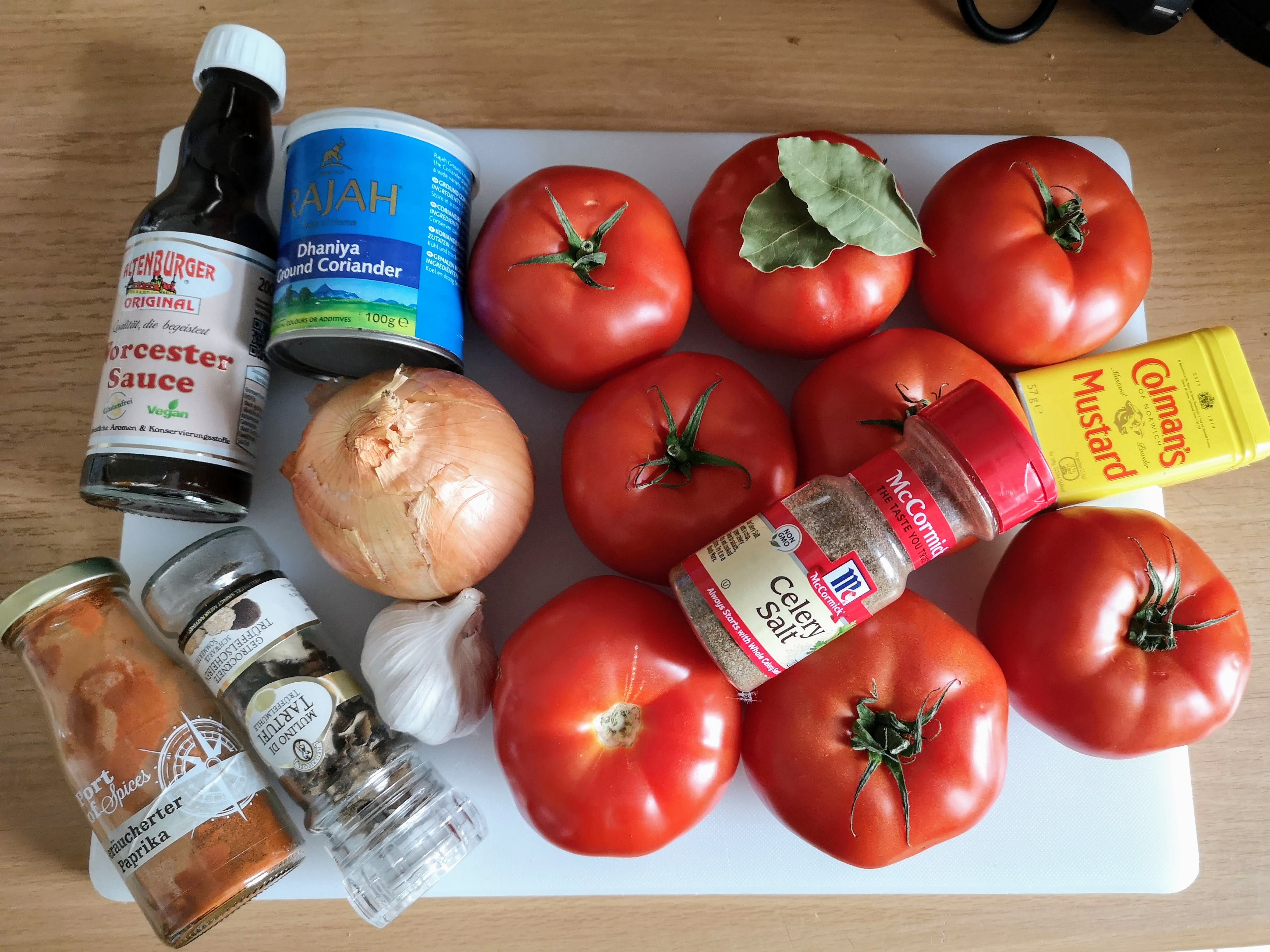
- 4-lbs Tomatoes (Red and whatever is in season)
- One Yellow Onion
- Four Cloves of Garlic
- 1/2 cup Dark Brown Sugar
- 1/4 cup Apple Cider Vinegar
- 1/4 cup White Vinegar
- 4-oz. Tomato Paste
- One tbsp. Worcestershire Sauce
- One tbsp. Ground Dried White Truffle
- One tbsp. Anchovy Paste
- One tsp. Ground Corriander
- One tsp. Mustard Powder
- One tsp. Smoked Paprika
- One tsp. White Pepper
- One dash of Celery Salt
- One dash Cayenne Pepper
- One pinch of Ground Clove
- One Bay Leaf
- Fresh Lemon Juice
- Sea Salt
- Olive Oil
To save time, you can absolutely switch out the fresh tomatoes for canned like these. You can also save time by using tomato puree and onion and garlic powder instead of fresh onion and garlic (supplementing with one tablespoon of each). The flavor will still be there but not quite as deep.
Part II: Prep
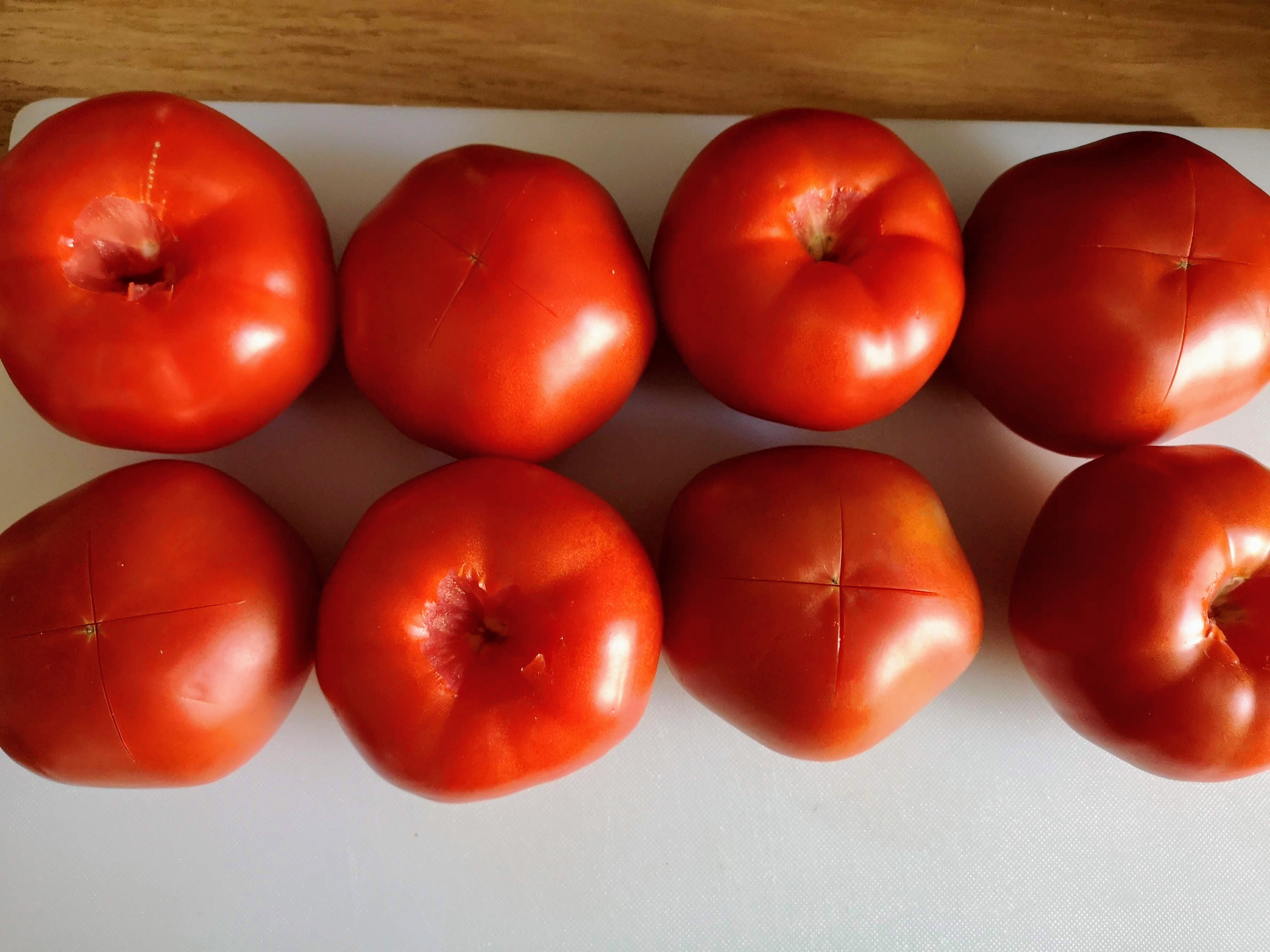
The first time-consuming aspect of this recipe is blanching and peeling all the tomatoes. I purposefully bought large tomatoes so this would be easier. The smaller the tomato, the more annoying this process will be.
I get a large pot on the stove and bring water to a barely a simmer. In the meantime, score the bottom of the tomatoes and remove the stem core.
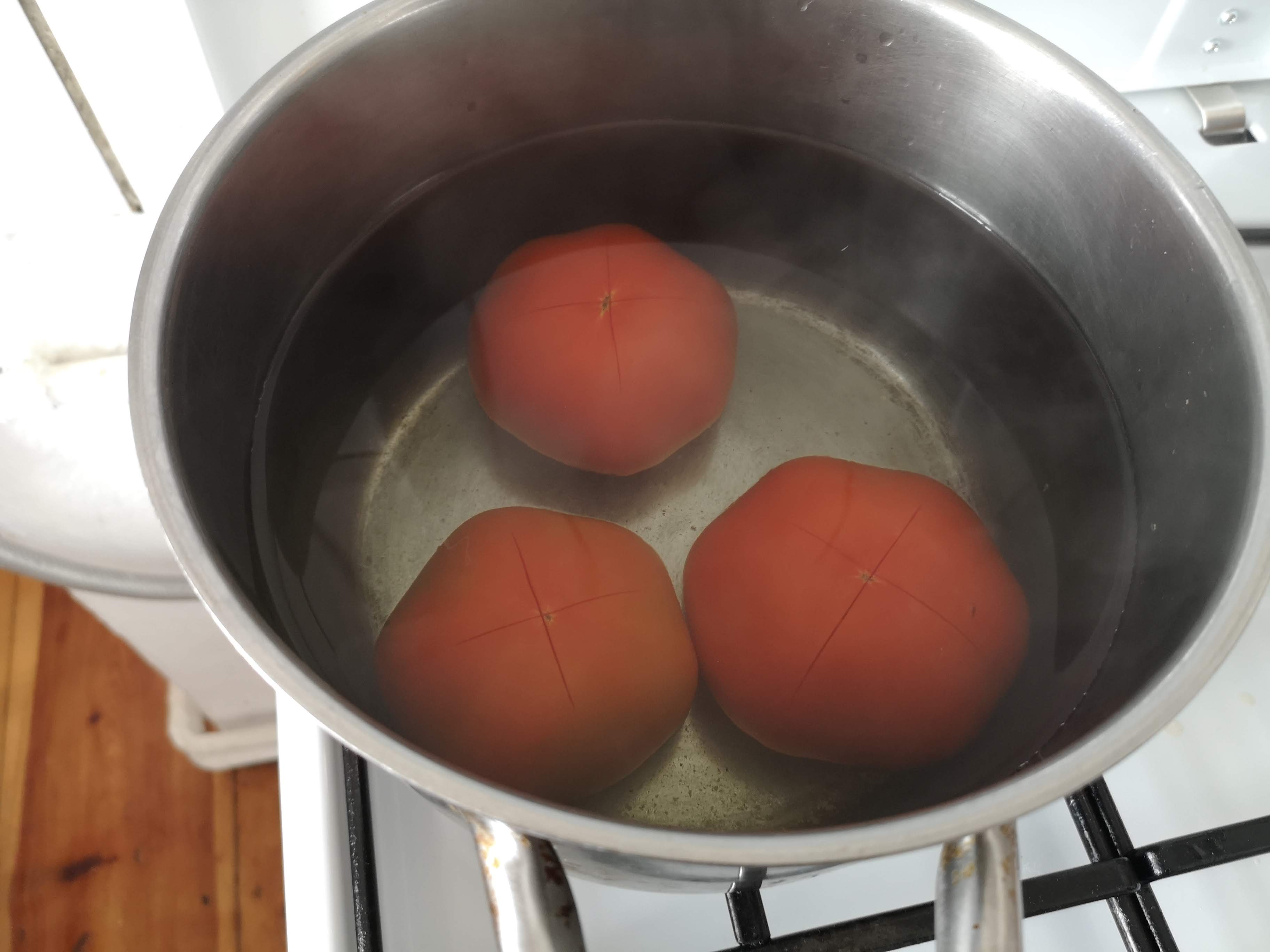
Once the water is just bubbling, I add in the tomatoes three or four at a time. Let them rest in the hot water until the skin continues to crack from the scoring crosses on the bottom of the fruit.
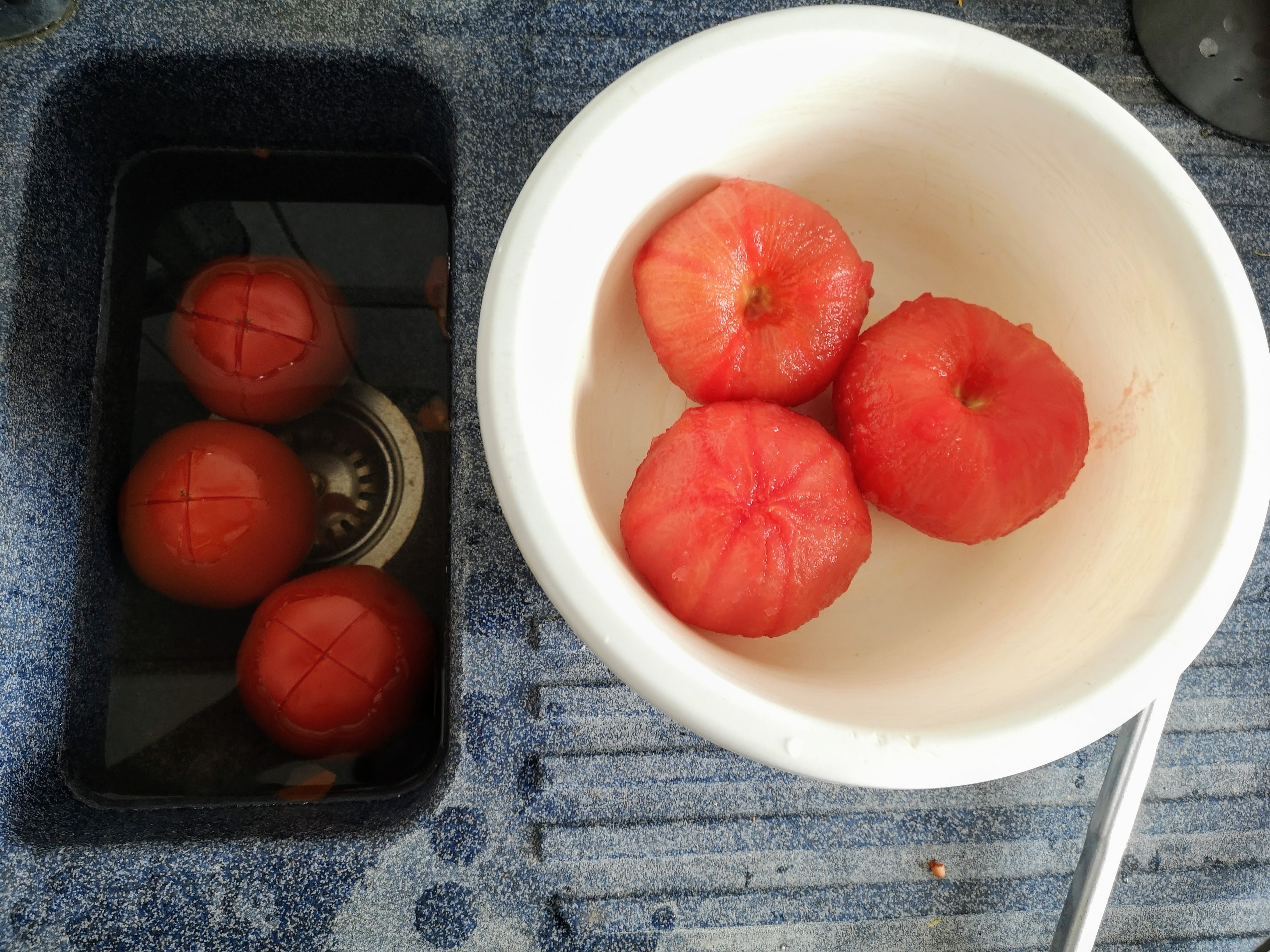
I immediately remove the tomatoes from the hot water to a cold water bath to stop them from cooking. I then add in another batch of tomatoes into the hot water. In the meantime, peel the tomatoes in the cold water bath. The skins should peel off with little to no effort. Rinse and place in a bowl. Repeat with the rest of the tomatoes.
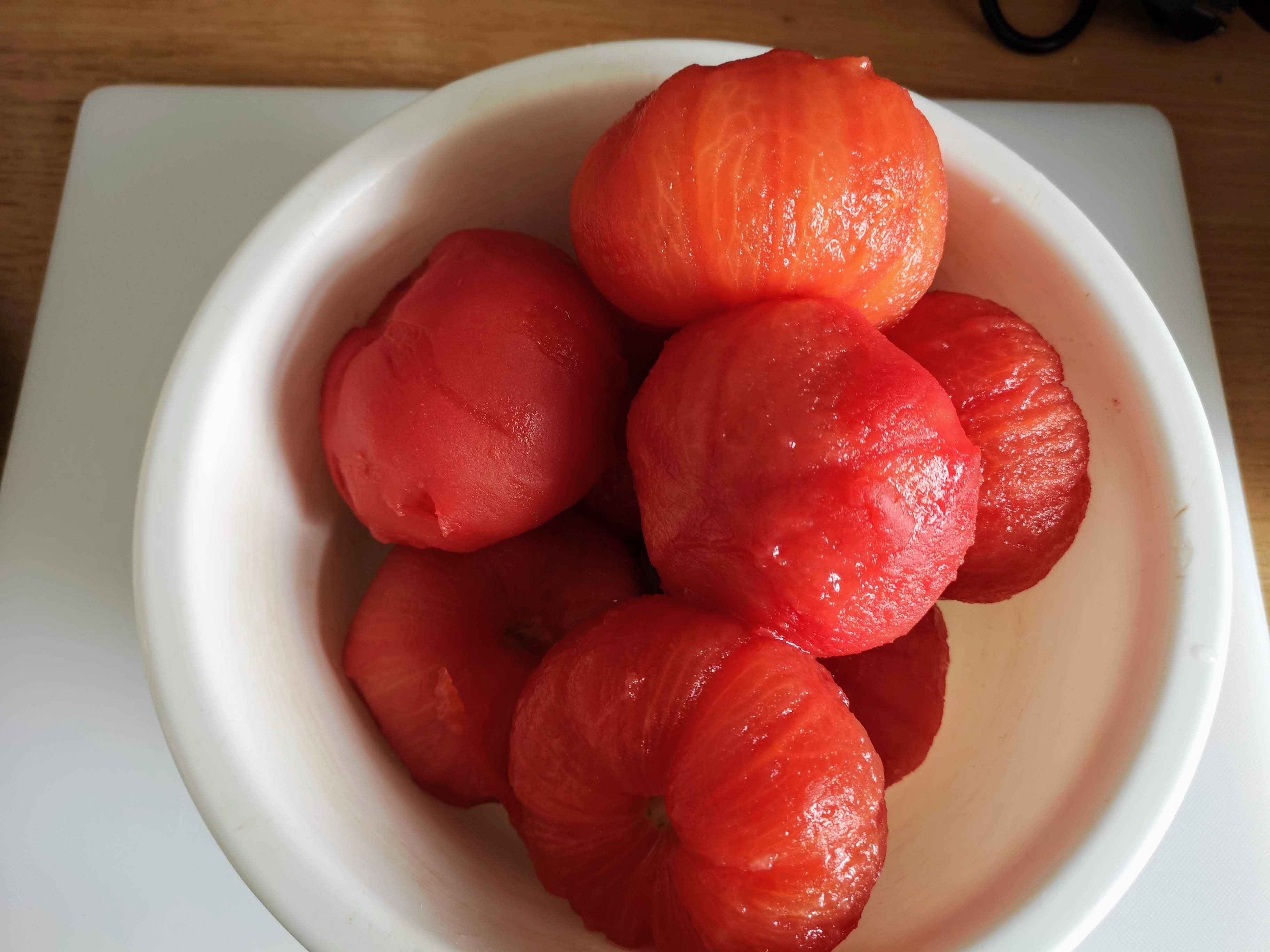
Next, I peel and dice the onion. It doesn’t have to be perfectly diced as everything will eventually be emulsified. I also peel the garlic. And, that’s it for prep, we’re ready to make some ketchup.
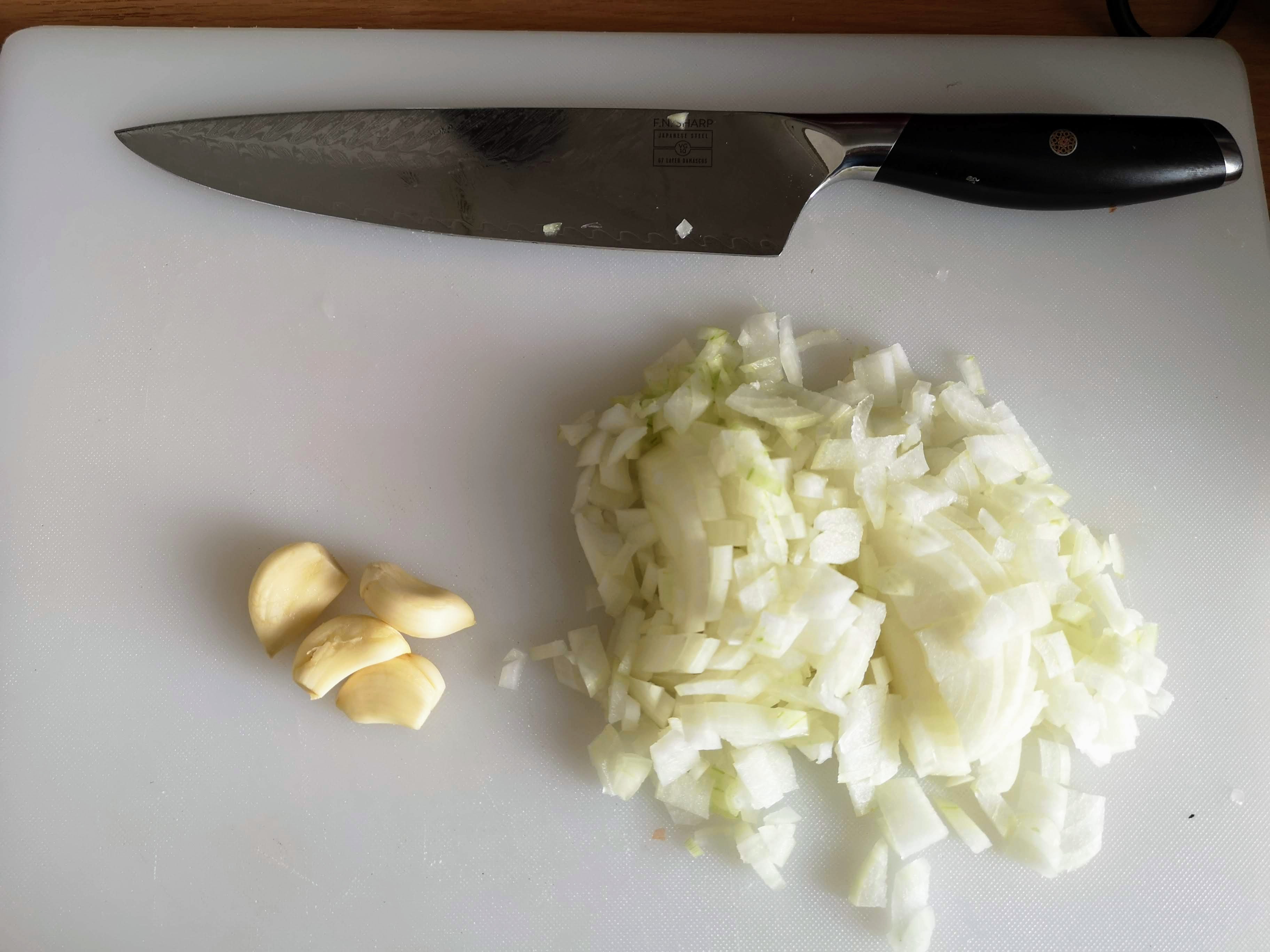
Part III: Cook
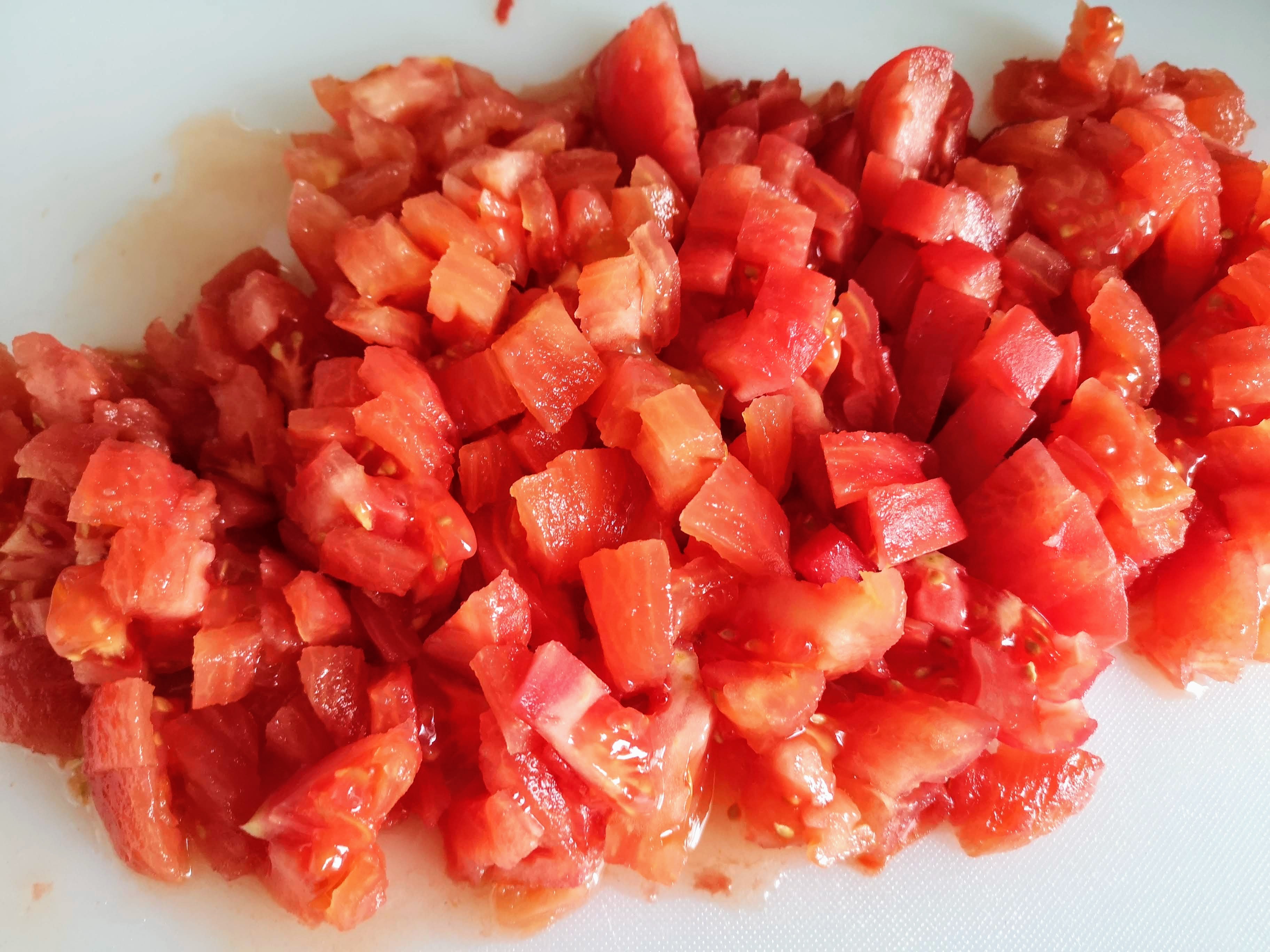
The Base
I dump the water from the pot I was using to blanch the tomatoes and dry it out. I add enough olive oil to make a thin layer across the bottom of the pot. I add in the onion and a pinch of salt to sweat them out.
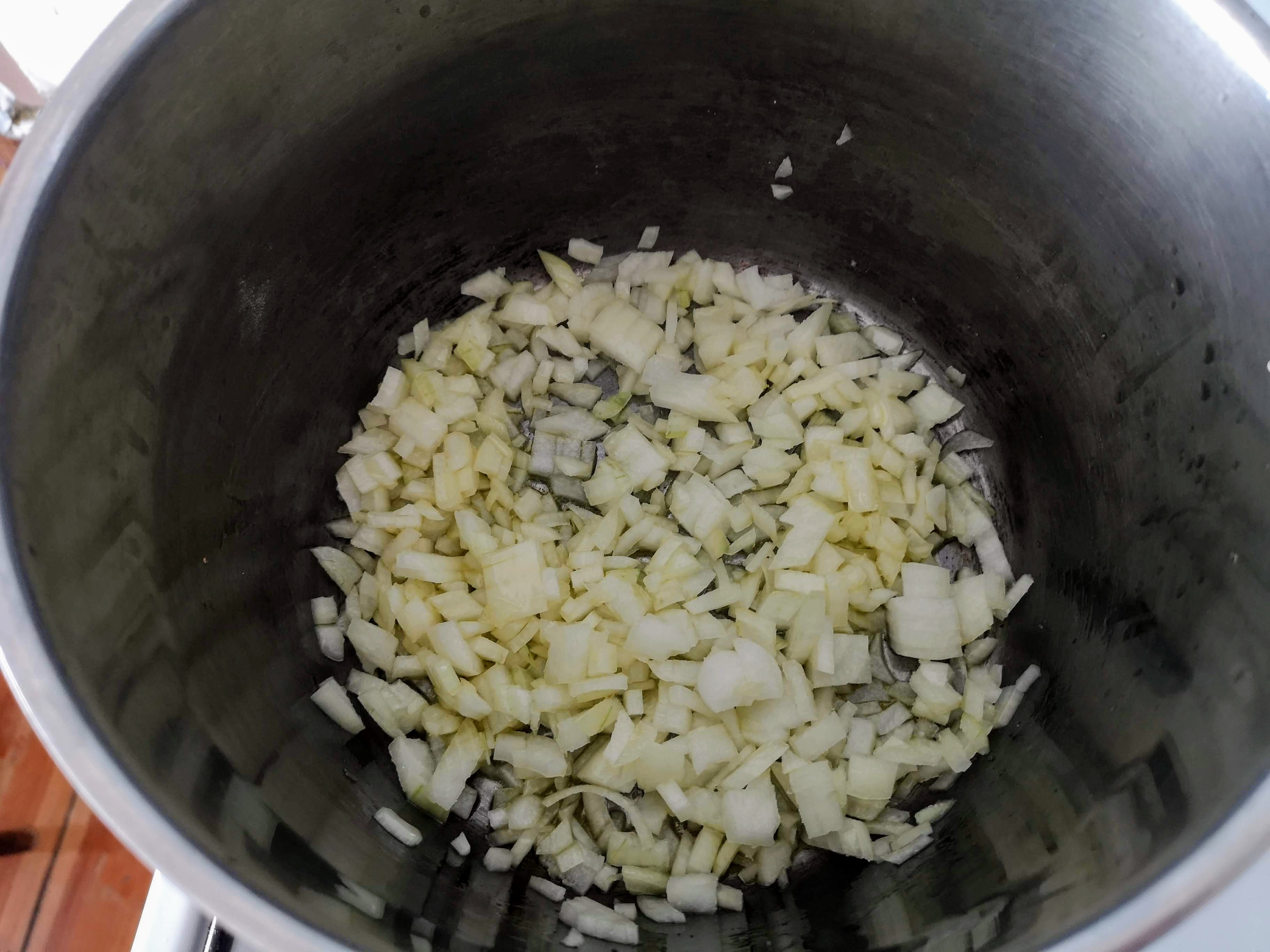
While that’s sweating, I dice my tomatoes. Again, this doesn’t have to be exact.
Once the onion is translucent, I crush the garlic into the pot and stir until it’s fragrant. I then add the tomatoes, making sure to get as much of the tomato juice into the pot as possible without spilling everywhere.
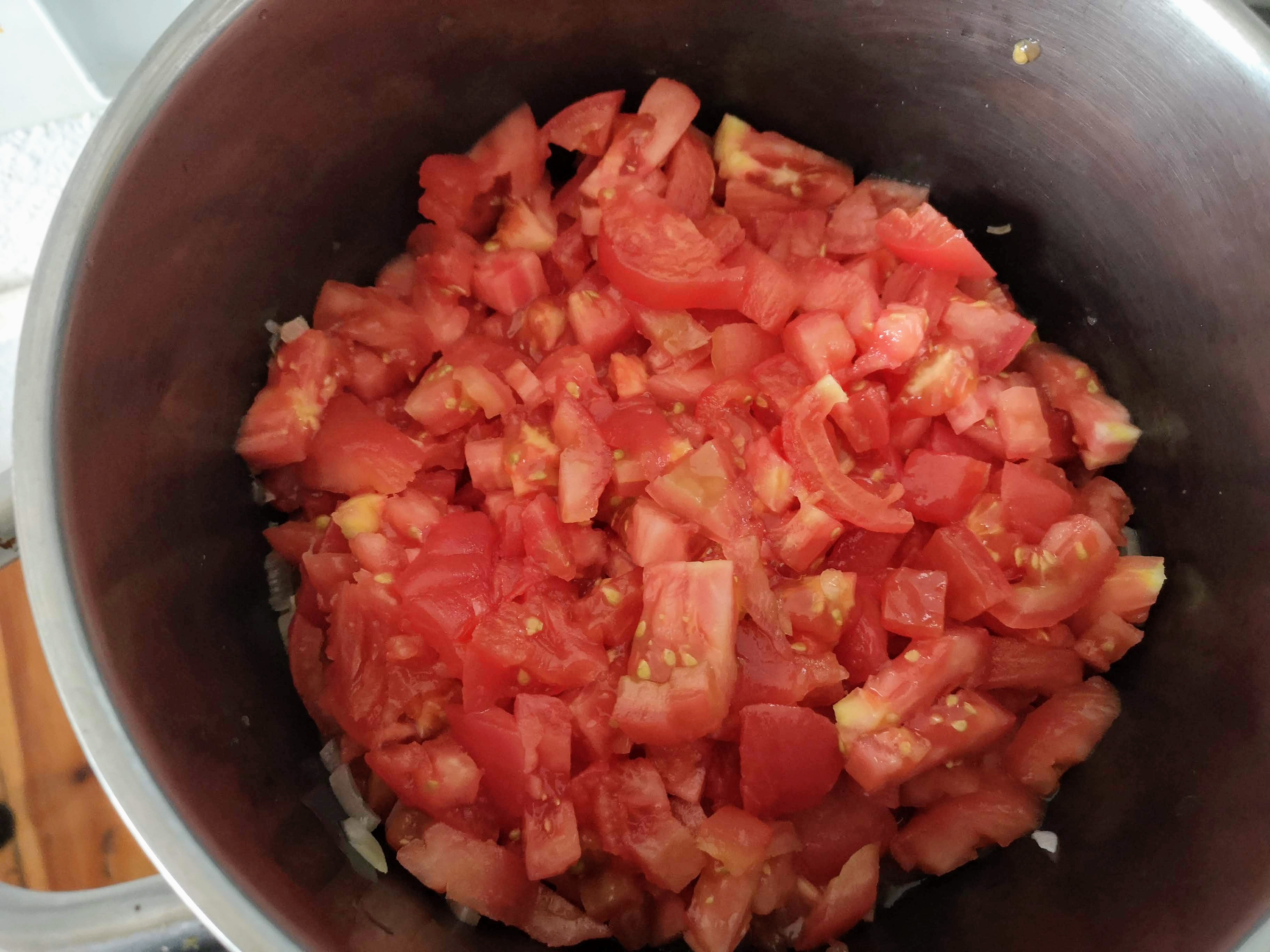
Next, I add a big pinch — some would call it a punch — of salt and bring the whole thing up to a light simmer. I cover the pot with an ajar lid and let it do its thing. Basically, we’re just making a simple tomato sauce at this point.
I let the sauce simmer for a solid hour, stirring every 15 minutes or so. Once, the flesh of the tomato is breaking down, it’s ready to be blended. You’ll also notice the smell of the sauce shifts from raw tomato to something more akin to a tomato sauce you’d get on pasta in Naples.
At this point, you could add some butter, boil some pasta, and make a killer Spaghetti Pomodoro.
The Ketchup
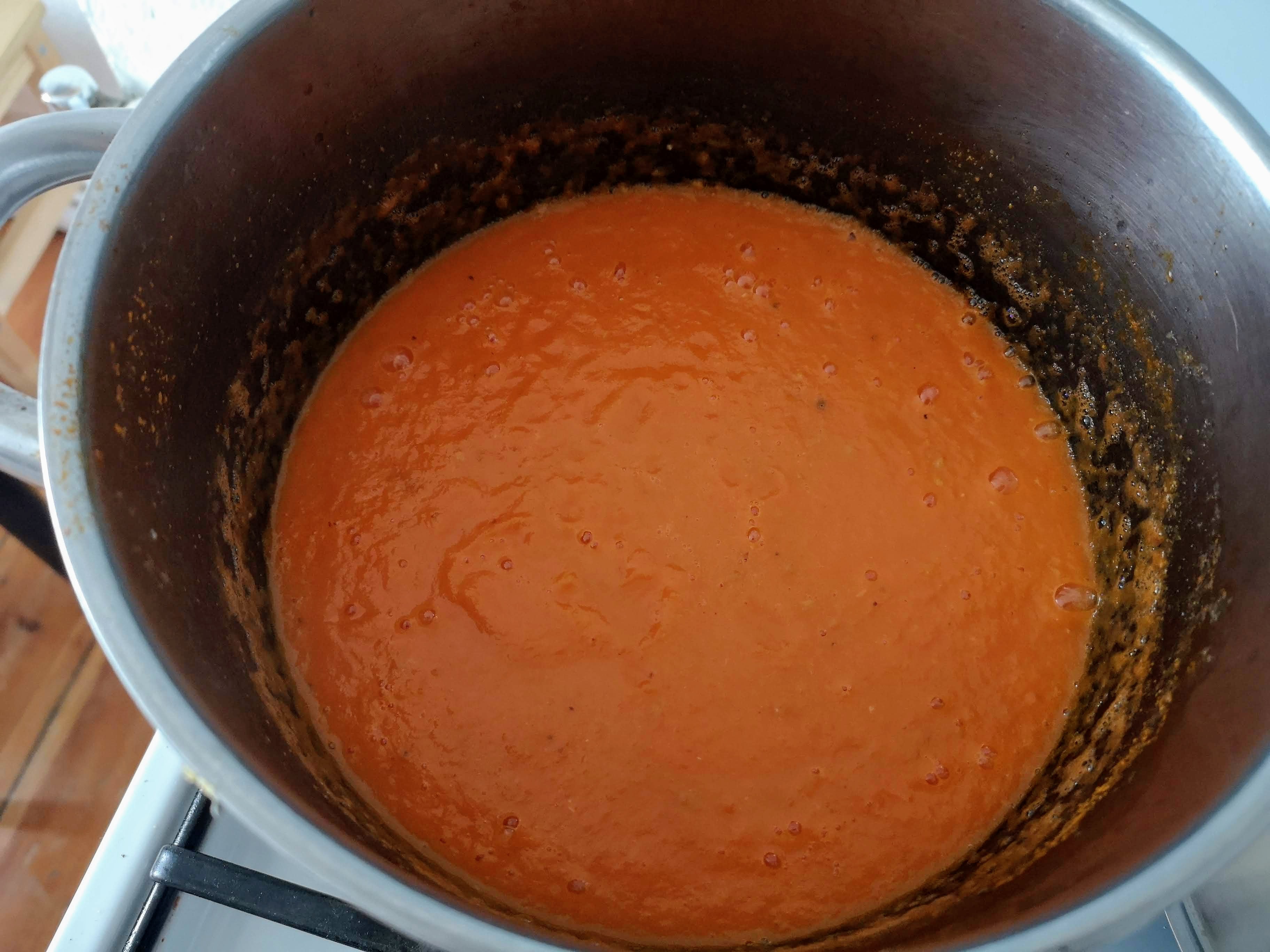
Once you have a fragrant and gloppy sauce, it’s time to blend it into a smooth puree. I use an immersion hand-mixer which is a lot safer than transferring the simmering liquid to a stand-up blender of some sort. You should definitely have an immersion hand-mixer if you’re going to be making sauces like this.
Once the sauce is completely smooth, it’s time to start adding the flavors that make this ketchup.
A quick aside: The two x-factors I like to use are dried white truffles and anchovy paste. The anchovy paste sort of has two elements. One, it’s a call back to ketchup’s East Asian origins as a fermented fish sauce. Two, it adds that little something that’ll make this ketchup pop. It’s not fishy, it’s more a level of texture and depth of flavor that you cannot replicate otherwise. The white truffles add an earthy level of umami that really helps the tomato shine down the road. Plus, the mushroom was a stepping stone from ketchup being a fish-based sauce to a tomato-based sauce, historically speaking.
In essence, adding these two components gives us the history of ketchup in one bottle. You can replace each with off-the-shelf mushroom powder and soy sauce as needed.
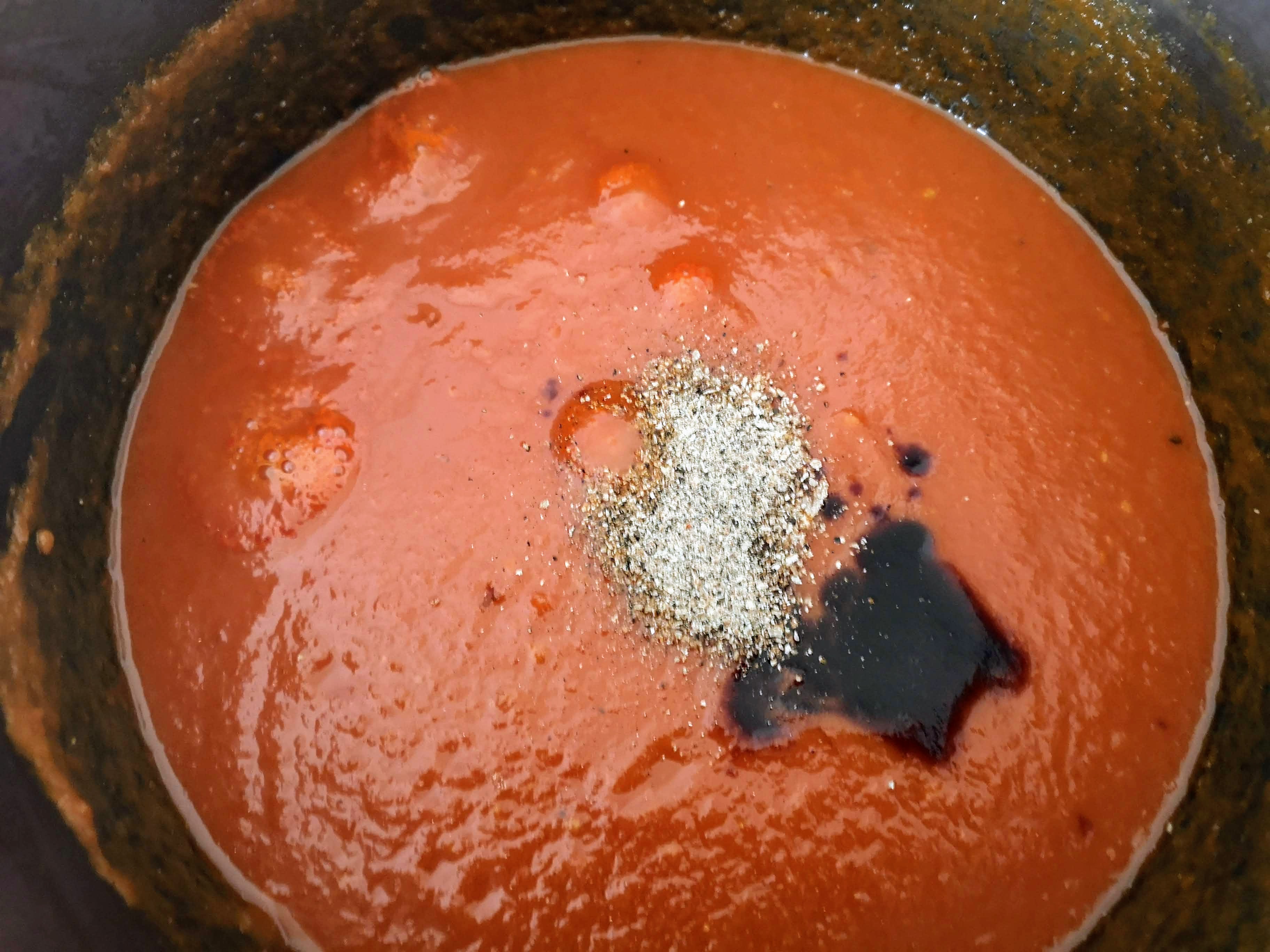
Once all of the ingredients are stirred in, I lower the heat and let the sauce simmer with an ajar lid for at least another hour. You want the sauce to reduce by at least a quarter, if not half. Low and slow is the play. I stir every ten minutes or so so that sugars don’t burn on the bottom of the pot. After about a half-an-hour, the ketchup will start to smell very tasty and ketchup-y.
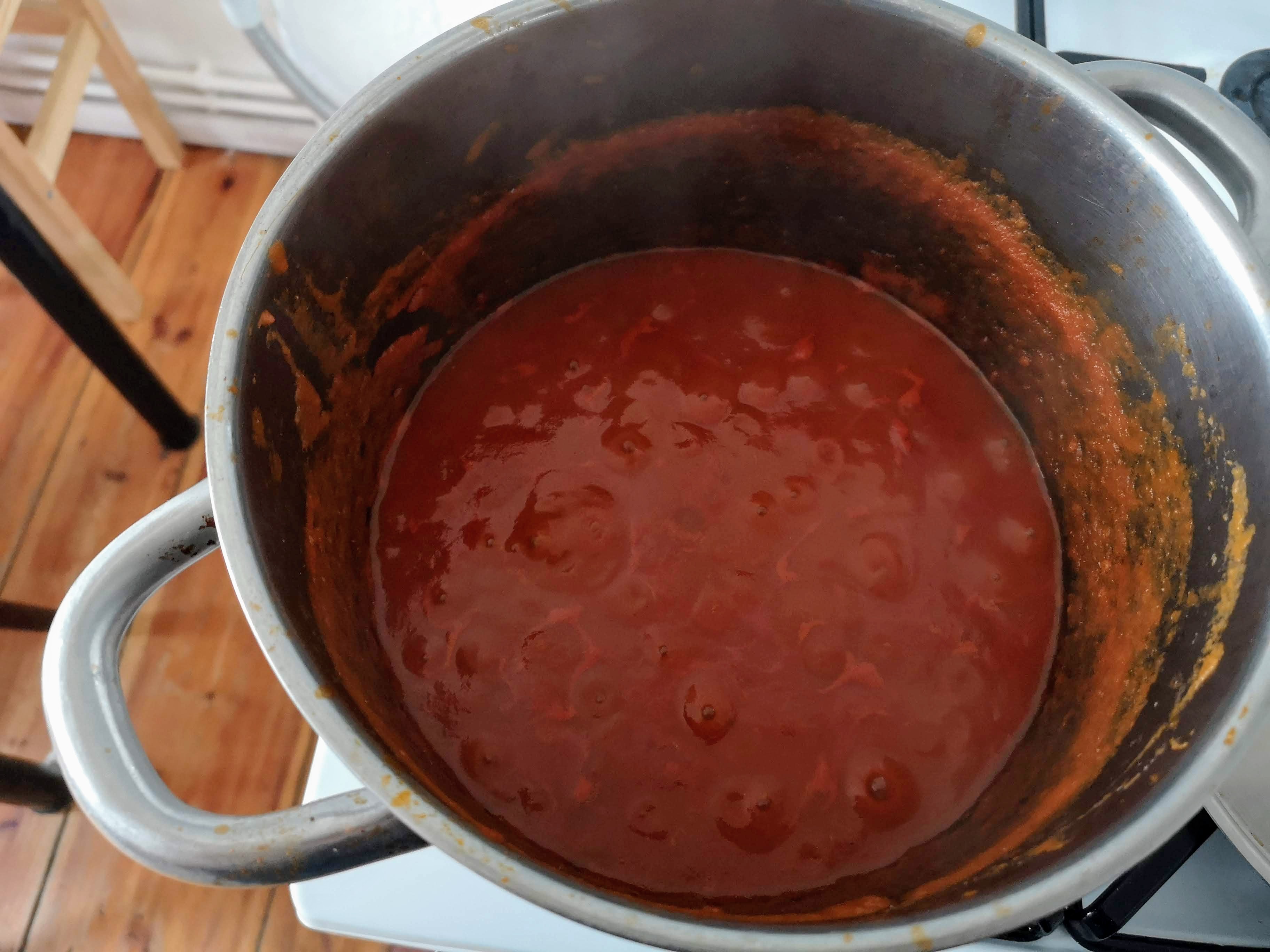
After an hour of simmering, check the taste. You might need to add a little more salt and pepper, maybe some more Worcestershire or paprika. In the end, it should taste good to you. I ended up adding a little more salt and white pepper and a small squeeze of lemon juice.
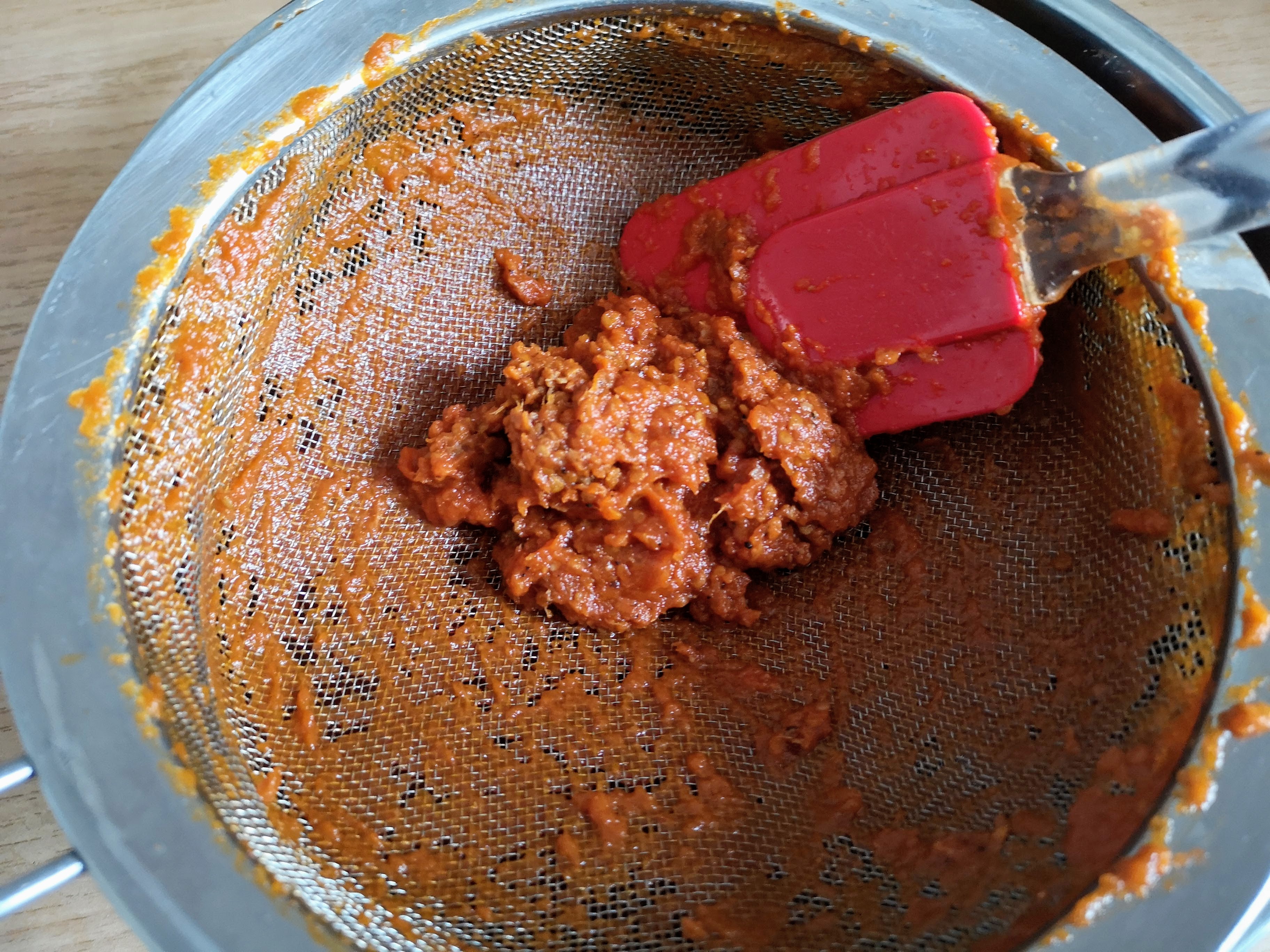
Finally, once the ketchup has reduced, you’ll need to strain it through a fine sieve. You’ll be left with a clump of the thicker parts of the ketchup which you can discard.
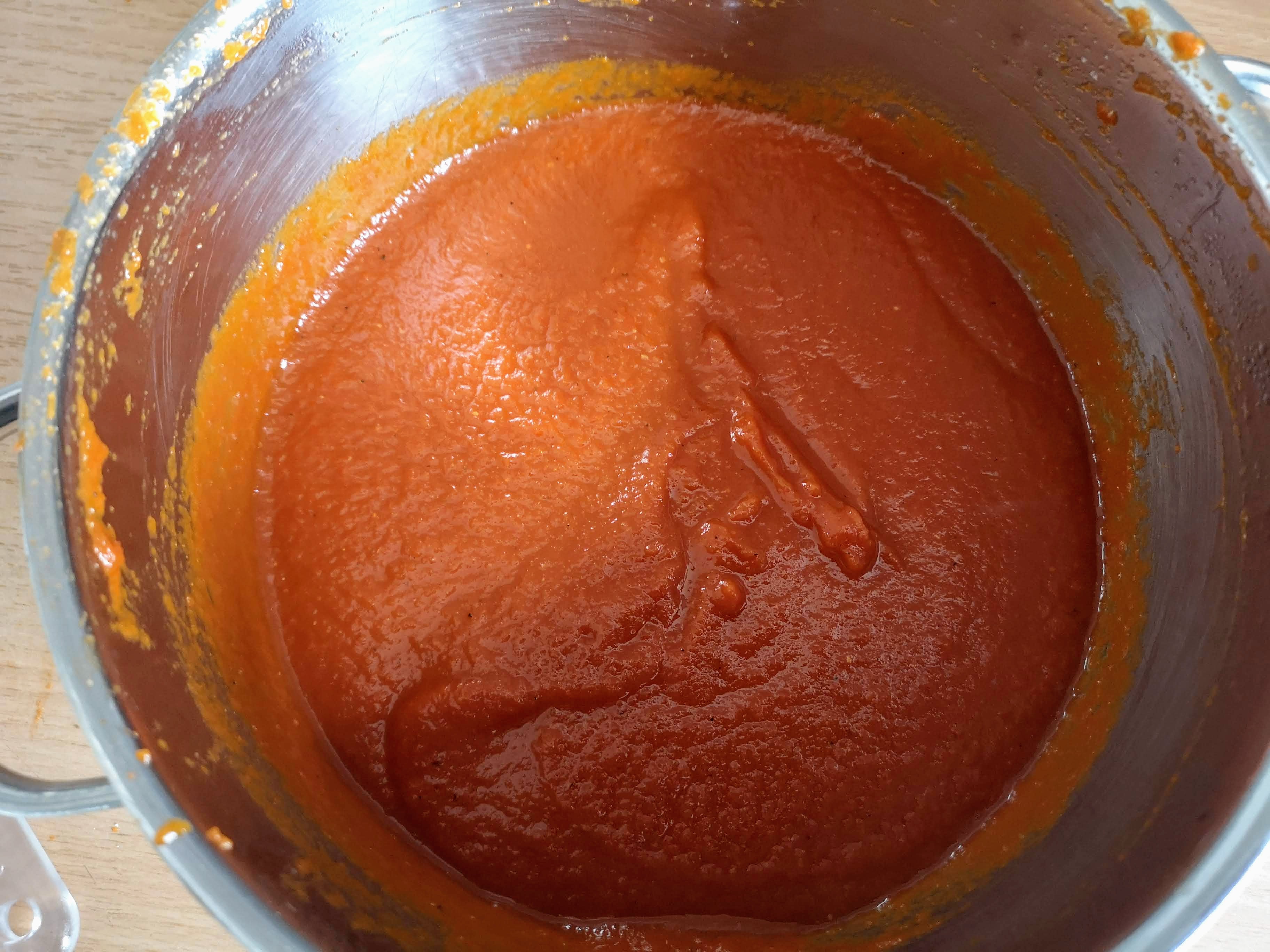
Part IV: Storage
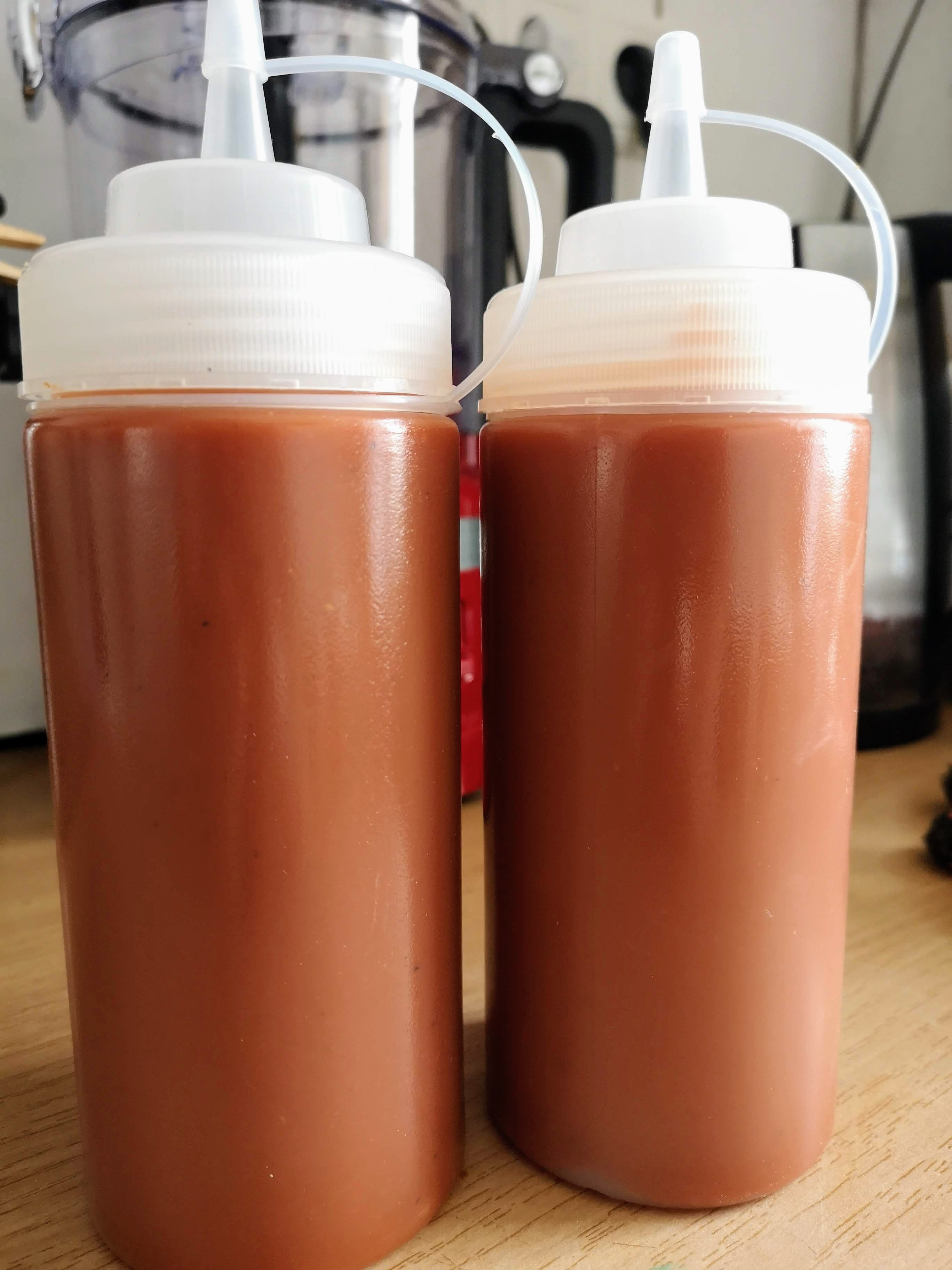
I funnel my ketchup into a squeeze bottle with a lid. Make sure you completely cool it in the fridge before you use it. It should last four to six weeks in the refrigerator but it won’t last long since you’ll be putting it on everything!
The ketchup has a rich umami base with a hint of sweet next to the tanginess. It’s really about the tomatoes that are counterpointed by the umami of the Worcestershire, truffle, and anchovy that just works. I prefer this version as it’s not overly saccharine or tart. Once you make it once, you’ll be able to start to customize it to you particular palate. Make your tweaks and hit us with them on Instagram or in the comments!







